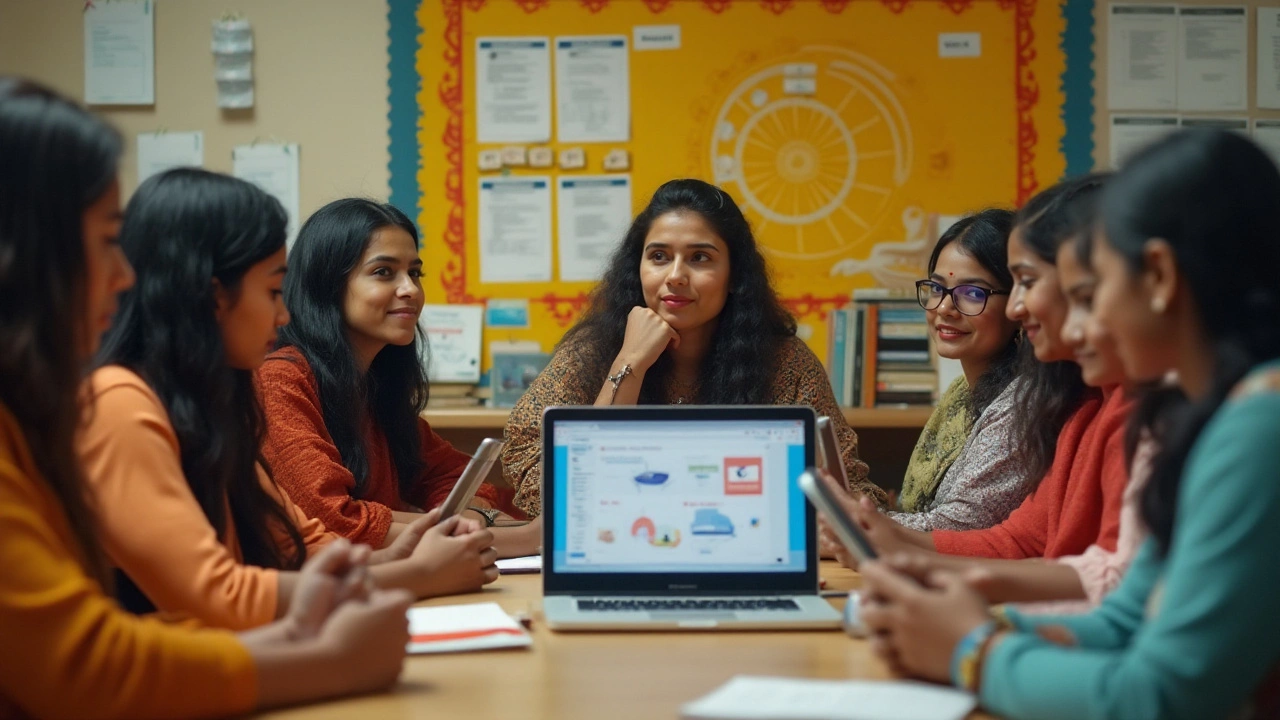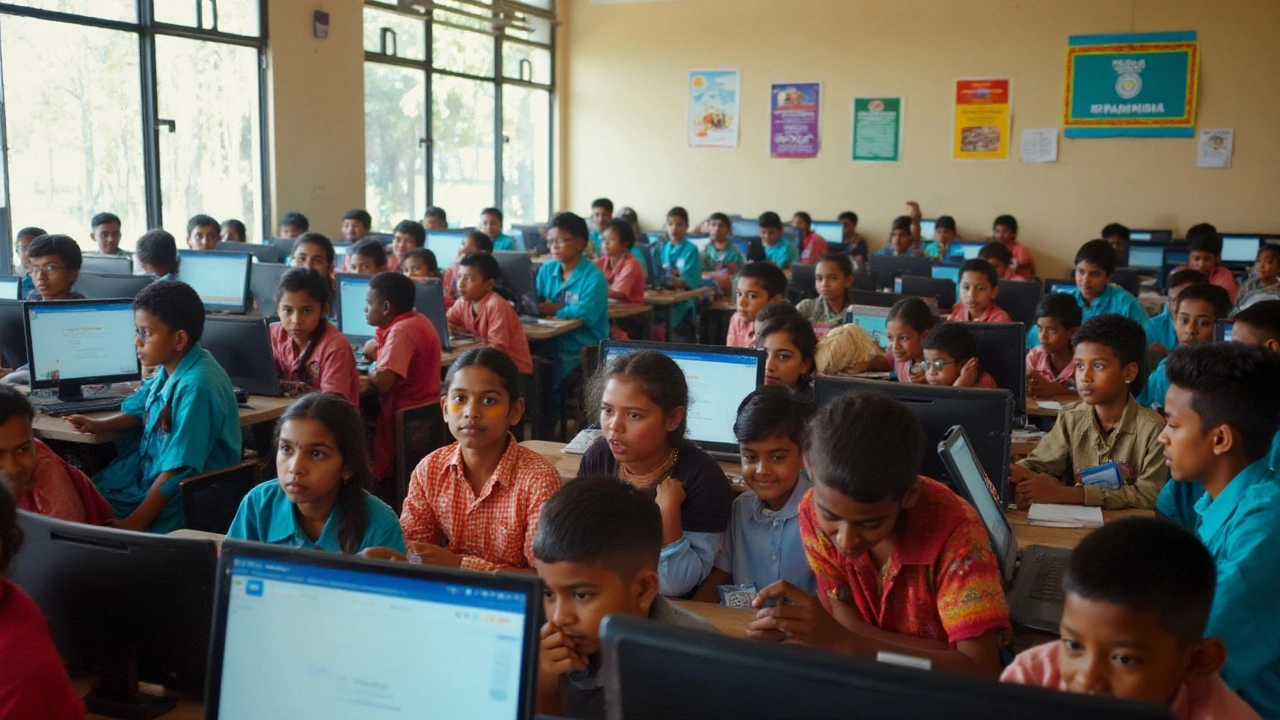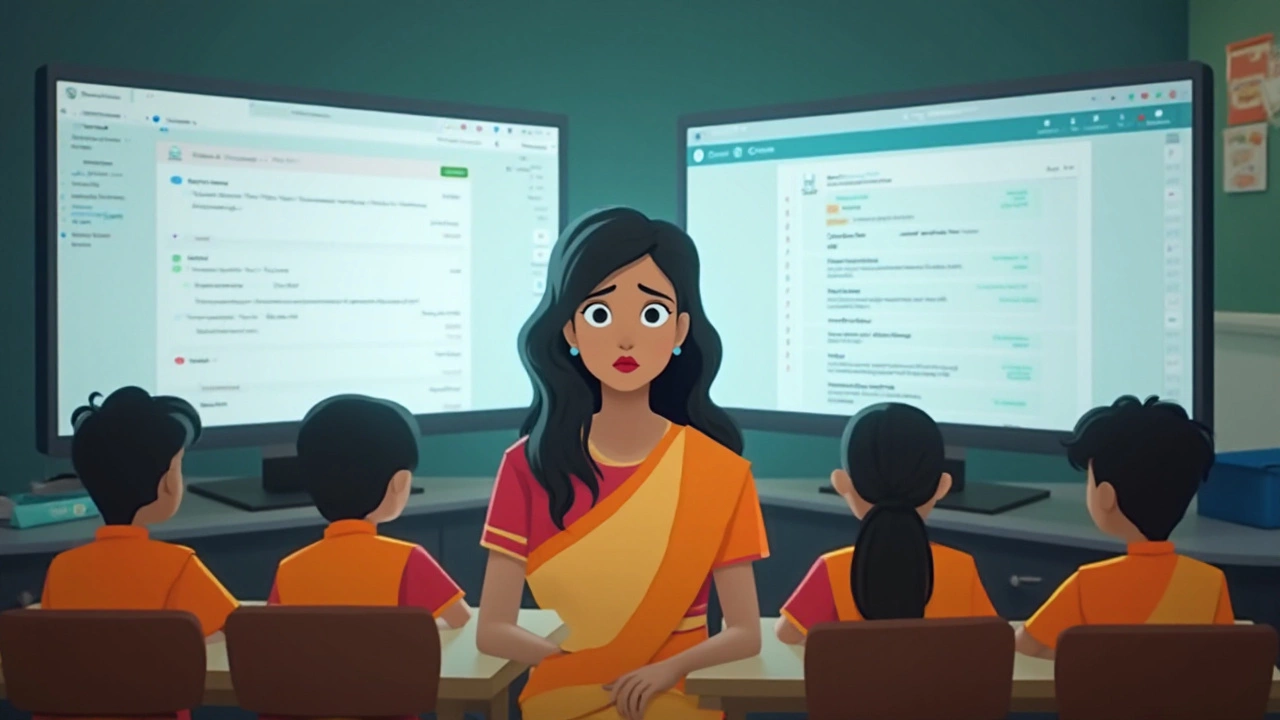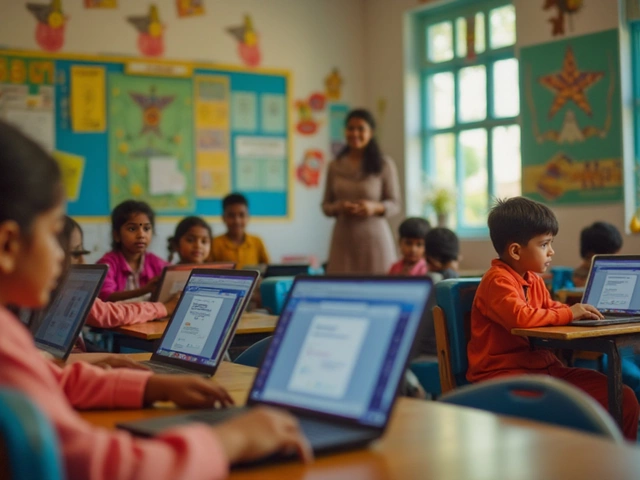
Google Classroom often stands out as a leading contender in the realm of digital education tools, yet its adoption is not as widespread as one might expect. Despite its convenience and the seemingly endless possibilities it offers for streamlining classroom management, some schools are still wary of fully integrating it into their teaching framework.
The reasons behind this hesitation are diverse. Privacy concerns remain at the forefront, particularly with regards to the safeguarding of student data. Schools must weigh the platform's benefits against their obligation to protect sensitive information. Moreover, there is the matter of whether Google Classroom's features adequately meet the diverse needs of educational environments compared to other learning management systems.
Beyond these considerations, schools often face practical challenges related to existing infrastructure. Not every school is equipped with the necessary technological resources to support this platform efficiently. Additionally, the level of adaptability among educators and students can vary, impacting the seamless use of this tool in a classroom setting. Finally, educational policies and regulations might limit the extent to which such platforms can be utilized, reflecting broader concerns within the education sector.
- Privacy Concerns and Data Security
- Comparative Features with Other Platforms
- Technology Infrastructure Constraints
- Teacher and Student Adaptability
- Institutional Policies and Regulations
Privacy Concerns and Data Security
When considering the use of Google Classroom in educational settings, one of the prominent issues that arises is the concern for privacy and data security. Schools today hold vast amounts of sensitive information about their students, and the promise of integrating technology into the classroom also brings with it the fear of data breaches. Google, a tech giant known for its extensive data collection practices, is oftentimes scrutinized under the lens of privacy rights. It is crucial for educational institutions to ensure that any platform they use aligns with their commitment to safeguard students' personal information.
One of the major concerns is permissions granted for account access. With Google Classroom, teachers and students may be required to log in using a Google account, exposing them to broader data collection practices that extend beyond the classroom context. This has raised alarms among educators and parents alike, wary of how their data might be used beyond the confines of education. An insight shared by a report from the Electronic Frontier Foundation indicates, "While Google Classroom offers a lot of conveniences, it doesn't always provide transparency about where and how the collected data is utilized."
To address these concerns, it’s important for schools to conduct thorough due diligence. This includes understanding how data is stored, who has access to it, and what measures are in place to prevent unauthorized access. Google does provide some assurances, stating that the data collected within Classroom is not utilized for advertising purposes and adheres to strict compliance standards such as COPPA and FERPA. However, the interpretation and communication of these policies can sometimes be opaque, creating a gap in understanding and trust.
Moreover, there exists a crucial need for clear data governance policies within each institution. These policies should delineate the guidelines for how educational technology platforms, like Google Classroom, are vetted and approved for use. Schools must ensure that they have the infrastructure and knowledgeable personnel required to maintain and monitor compliance with these policies. Additionally, engaging in training programs for educators and students can promote better awareness and practices around digital privacy.
Ultimately, the crux of the issue lies in whether schools can feel reassured that using Google Classroom does not compromise their primary duty to protect their students. With increased scrutiny over digital rights, it's imperative that schools and educational platforms collaborate to foster environments where learning and data security coexist harmoniously. Parents and educators calling for transparency in digital tool usage underline a broader cultural shift towards demanding accountability and ethical use of technology in education.
Comparative Features with Other Platforms
When weighing Google Classroom against other e-learning options, one factor that stands out is its straightforward integration with the whole suite of Google Services. For many educators, this ease of use can be a tremendous time-saver. Yet, some other platforms offer a broader array of features that may better align with particular educational goals. Take Moodle, for example. It's highly customizable, allowing teachers to create an experience tailored to students' needs. This flexibility comes at the price of complexity; while Google Classroom can be set up in just a few minutes, Moodle requires a bit of technical know-how to get it off the ground. But, for schools prioritizing customization, taking the time to master Moodle can be worth it.
A key area where Google Classroom might fall short is in grading and analytics. While it offers a basic grading system, other platforms like Canvas have more robust analytics that allow teachers to track student progress with greater precision. Such in-depth analytics empower educators to identify trends, disparities, and potential areas for improvement in real time. Canvas's integration of these features can provide actionable insights that some educators feel Google Classroom's current offerings lack.
Community and Support Ecosystem
Another point of comparison is the support community that surrounds these platforms. Google Classroom benefits from a large and active community, thanks to the widespread use of Google products. However, platforms like Blackboard have been established in the academic space for much longer and have developed a support ecosystem that includes extensive tutorials, peer-reviewed forums, and dedicated customer service teams. For some educators, especially those who are not tech-savvy, having access to a reliable support system is crucial when incorporating new technology into their routine.
There is also the aspect of integrated tools and content libraries. Schoology, another e-learning platform, stands out for its ability to integrate with major content providers and third-party apps. Specialized content that ties directly into a curriculum can be easily accessible for teachers using Schoology. Although Google Classroom does allow some third-party integration, critics often note that its library of available tools isn't as extensive as some competitors. For instance, Schoology’s integration capabilities can significantly enhance the classroom experience by providing resources that would otherwise be outside a teacher's reach.
"Google Classroom is simple and best for classrooms needing straightforward management. But for those seeking rich interaction, more analytics, and integration capabilities, platforms like Canvas and Schoology are raising the bar." — EdTech Magazine
Cost Effectiveness
When it comes to cost, Google Classroom has the upper hand as it is free to use. For schools operating on tight budgets, this can be a compelling incentive. Many other platforms offer free versions as well, but their more advanced features often come with a cost. The decision to invest in paid platforms hinges largely on whether the additional features offered justify the expenditure. Schools must reflect on whether the enhanced capabilities align with their educational objectives and strategy. In some cases, the free access to Google Classroom is sufficient, while for others, the advanced features of platforms like Blackboard may warrant the expense.

Technology Infrastructure Constraints
One of the critical challenges hampering the adoption of Google Classroom in schools is the disparity in technology infrastructure. The digital divide remains a significant hurdle in both urban and rural educational settings. In many schools, accessing reliable internet is more of a luxury than a given. This affects not only students but educators who depend on stable connectivity to deliver lessons effectively. With internet bandwidth being a foundational requirement for platforms like Google Classroom, schools with limited connectivity struggle to make full use of the platform’s features, thereby inhibiting learning opportunities.
Another facet of this infrastructure challenge is the availability of suitable devices. While many students today own smart gadgets, device accessibility is not uniform across different demographic segments. Some schools might have outdated hardware that can impede the seamless performance of Google Classroom, leading to potential disruptions in the learning process. Moreover, budget constraints often limit schools' ability to upgrade their tech arsenal regularly. As technology advances rapidly, this can result in a gap between the school's current hardware and the requirements of new e-learning platforms.
The human element in this infrastructure conundrum should not be overlooked. Without adequate training, even well-equipped teachers may find themselves at sea amid the complexities of a new platform. Professional development in digital literacy is essential to ensure that teachers can effectively integrate education technology into their lesson plans. The inconsistency in tech preparedness is notable, leading to varied levels of competence when using such platforms in the classroom. This scenario calls for comprehensive training programs that are specifically tailored to address these technological disparities across the teaching workforce.
Budgetary limitations are a persistent issue within educational districts. When resources are strained, investments in technology infrastructure take a backseat to more pressing needs, such as teacher salaries or physical materials. Even when schools aspire to upgrade their systems, they must often rely on grants or governmental funding that may not come through consistently. This sporadic financial support creates an environment where technological upgrades are delayed, affecting the potential for classrooms to integrate solutions like Google Classroom effectively.
An illustrative quote from a report by the U.S. Department of Education highlights,
"A significant number of public-school districts reported that their available internet access and student-to-device ratios were inadequate to support full-time remote learning at the outset of the pandemic."This statistic underscores the ongoing struggle faced by schools in bridging the technology gap. To overcome these constraints, schools often have to rely on creative solutions, such as community partnerships or staggered classroom schedules, to make the most of their current capacity.
Additionally, the surge in demand for e-learning platforms has led to intensified scrutiny of cybersecurity protocols. Many schools are wary about the vulnerabilities that come with increased online activity. Ensuring that both their network and data remain protected from breaches necessitates robust cybersecurity measures, which can further stretch thinly spread budgets. This added layer of complexity prompts administrative hesitation when considering digital classrooms, as they must balance the costs of implementing robust security against the risks of potential cyber threats. In this context, leveraging Google Classroom safely requires a concerted effort in bolstering security measures at the educational institution level.
Teacher and Student Adaptability
Introducing a new digital platform like Google Classroom into the teaching and learning process is not always a straightforward task. While students today are more digitally native, their ability to adapt to specific educational tools still varies widely, and the same is true for teachers. One of the crucial factors influencing the adoption of Google Classroom in schools is the adaptability of both educators and students to this new medium. Teachers often need to develop a comfort level not just with the technology itself, but also with integrating it into their pedagogical styles effectively. This sometimes requires shifting away from traditional teaching methods, which can be a significant hurdle for those accustomed to certain teaching models.
On the students' side, while they may be more familiar with technology in their social lives, leveraging it effectively for education requires specific skills and discipline. Students need to learn not only how to navigate through the interface but also how to engage with course materials in a new format. They must cultivate self-motivation and effective time management skills to succeed in an environment that offers considerable flexibility. This transition is not automatic and requires a period of adjustment which may cause anxiety or reluctance among students who are more comfortable with in-person interactions.
"Teachers who embrace change and ongoing professional development tend to navigate new educational technologies with greater success, ultimately benefiting student outcomes," noted Dr. Linda Darling-Hammond, an education expert.
To bridge this gap, schools may offer training sessions that equip teachers with the knowledge and skills needed to utilize e-learning platforms effectively. These sessions can provide valuable insights into not only navigating the technical aspects of Google Classroom but also integrating it into lesson planning. As teachers become more adept, they can foster a supportive learning environment where students feel more comfortable utilizing the tool. This gradual build-up of confidence among educators and learners significantly boosts the platform's effectiveness in practice.
Investing in consistent training and providing adequate support for both teachers and students can transform the way an educational institution perceives and uses digital platforms. Regular feedback mechanisms can help identify the stumbling blocks unique to each actor in the educational process, allowing for tailored solutions. Moreover, acknowledging and leveraging the tech-savviness of students can also aid in smoother transitions, as peers often assist each other in overcoming learning curves associated with digital tools.

Institutional Policies and Regulations
When considering the adoption of platforms like Google Classroom, schools must navigate a maze of institutional policies and regulations. These rules, crafted to protect the interests of students and staff, can often present challenges. For instance, educational institutions are governed by various privacy laws, like the Family Educational Rights and Privacy Act (FERPA) in the United States, which mandate the protection of student information. Schools need to ensure that any e-learning platform complies with these regulations to avoid potential legal pitfalls. This means carefully reviewing the data privacy terms provided by Google Classroom. In some cases, districts may even require legal counsel to interpret these agreements, further complicating the decision-making process.
Apart from legal requirements, schools also have unique educational policies guiding the choice and use of digital tools. These policies might include standards for lesson delivery, student engagement, and assessment practices, all of which may not align seamlessly with what Google Classroom offers. An example is the need for customizable features to accommodate diverse learning modules or differentiated instruction strategies, which some schools prioritize. Consequently, despite its user-friendly appeal, Google Classroom might fall short in matching institutional criteria that emphasize a more tailored educational experience.
Furthermore, boards of education often reflect on long-term strategic planning and budgeting when selecting educational technologies. Cost considerations become a pivotal aspect in the selection process. While Google Classroom is free to use, associated costs such as additional technology infrastructure, professional development for teachers, and ongoing maintenance and support are crucial factors. Schools must evaluate whether their financial investment will yield the desired educational outcomes and align with their mission and vision.
"Educational institutions must consider not just the upfront costs but the long-term implications of incorporating new technologies," an education consultant remarked, highlighting the broader scope of these decisions.
Challenges in Policy Implementation
Implementing these policies is not without hurdles. Schools face the challenge of keeping policy documents updated in a rapidly evolving digital landscape. Technology is advancing at a pace where today's solutions could be obsolete tomorrow. Departments need to stay vigilant and adaptable to changes, ensuring their regulations are not only compliant but also relevant. Moreover, achieving consensus among various stakeholders, including teachers, administrators, parents, and students, adds another layer of complexity. Each group might have differing priorities and expectations, necessitating a delicate balancing act by decision-makers. The success of platforms like Google Classroom hinges significantly on how well these policies and regulations are crafted, communicated, and executed within the educational framework.


